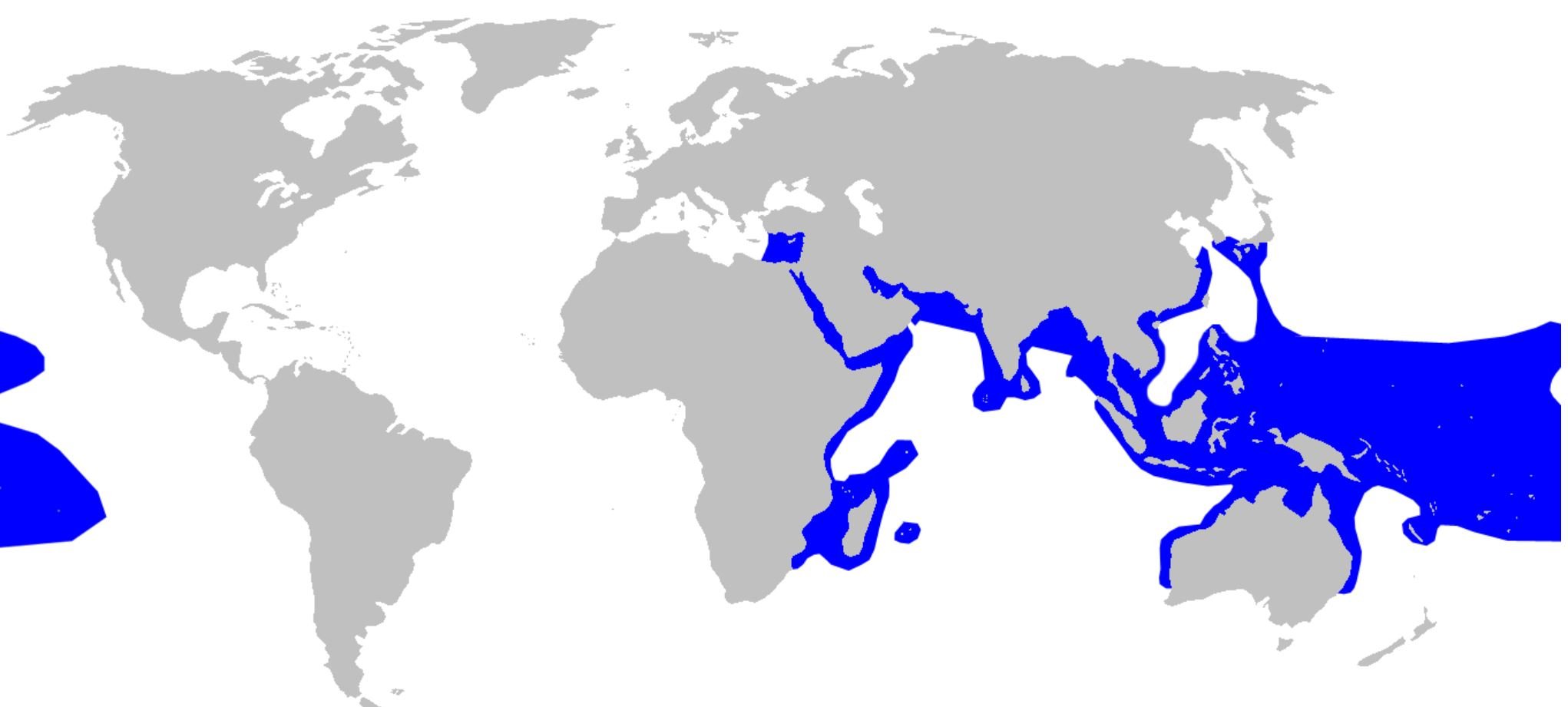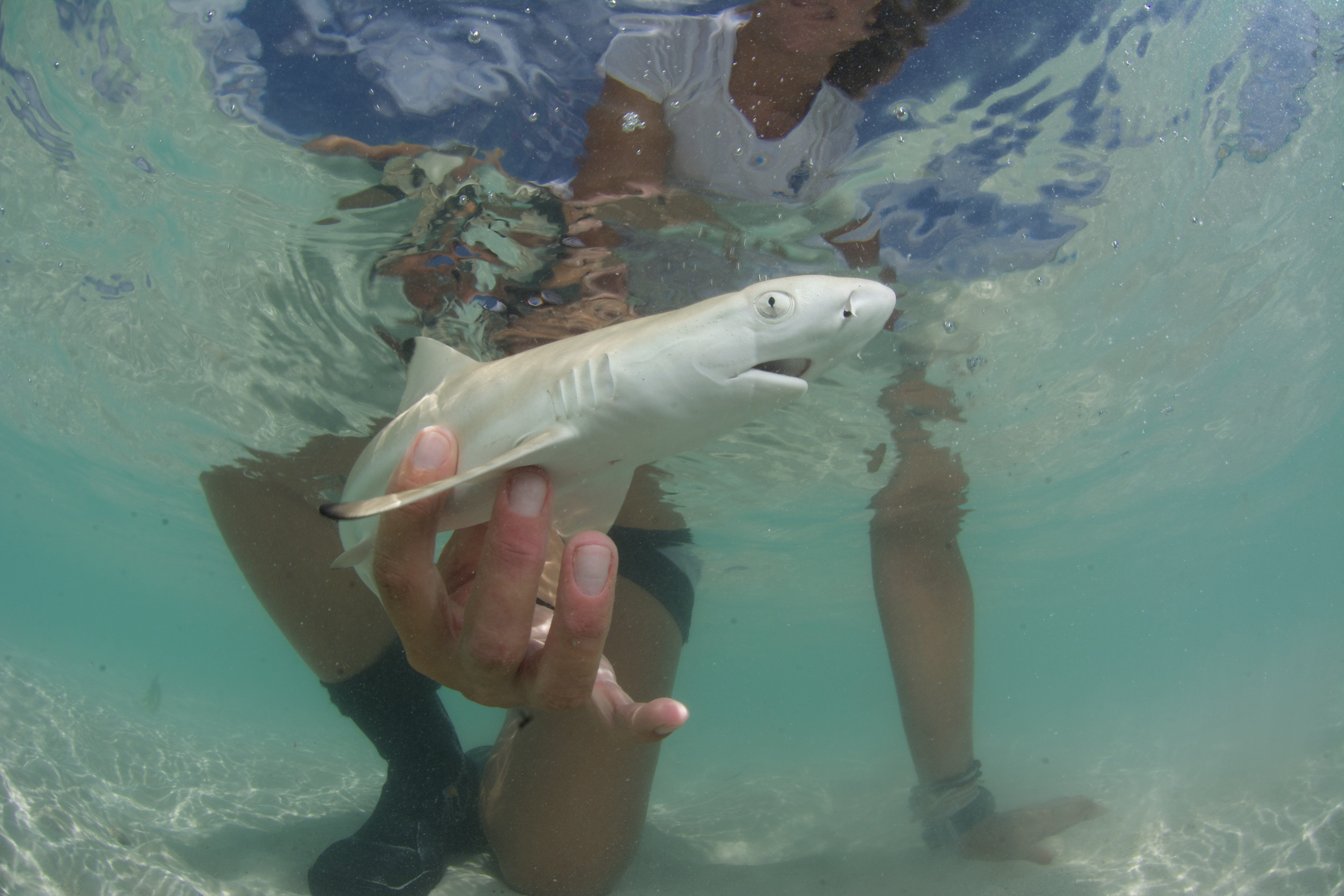Getting to know our sharks
The blacktip reef shark Carcharhinus melanopterus is a commonly seen shark species with a large distribution in the Western Pacific and Indian oceans and the eastern Mediterranean (via the Suez Canal). Due to the fact that it is quite common and occurs in shallow coastal waters, many studies have been published about the species and they reveal variation in the shark’s life-history traits (anatomy and behaviour) across different locations.

The distribution of the blacktip reef shark is shown in blue. © Image from Compagno L, Dando M & Fowler S (2005) Sharks of the World. Collins Field Guide.
At St Joseph Atoll in the Seychelles, we work with a population of juvenile blacktip reef sharks that has not been studied before. This means that even if there already is a large amount of data available about blacktip reef sharks elsewhere, we have the opportunity to get new, location-specific data from a shark population that is new to science.
Some of our findings will cover the blacktip reef shark’s
- Breeding season
We have found that blacktip reef shark pups at St Joseph are born between October and April (if you can’t remember how we know that an individual shark has just been born, check out my former blog). This is similar to sharks at Moorea, French Polynesia, where the females give birth between September and January, but different to Indonesia, where they give birth in August and September. At both of these other locations, female blacktip reef sharks give birth annually. In the near future, at St Joseph Atoll we will also be able to understand the blacktips’ breeding pattern with the help of genetic analyses (check out previous blog about DNA samples). - Size at birth
In addition to having a highly variable pupping season around the world, the blacktip reef shark shows variations in size at birth in different locations. In the Pacific Ocean, at the small atoll of Palmyra, blacktip reef shark neonates are only 35 centimetres (14 inches) long from nose tip to tail tip, whereas in northern Australia they measure 45–50 centimetres (18–20 inches). At St Joseph Atoll we found that shark sizes at birth differ not only from one location to another, but also within one location. The largest newborn shark we’ve caught so far at St Joseph Atoll measured 60 centimetres (24 inches), whereas the smallest measured only 39.5 centimetres (16 inches). This is an incredible difference of 20 centimetres (eight inches) in newborn sharks! On average, though, neonate blacktip reef sharks at St Joseph Atoll measure approximately 45 centimetres.

The smallest neonate blacktip reef shark (a male, 395 cm long) we’ve caught so far, on 13 October 2015 at St Joseph Atoll. Photo by Rainer von Brandis | © Save Our Seas Foundation
Do you want to know more about the second shark species that uses St Joseph Atoll as a nursery for its pups? Stay tuned and check my next blog about the sicklefin lemon shark!

Leave a Reply
You must be logged in to post a comment.